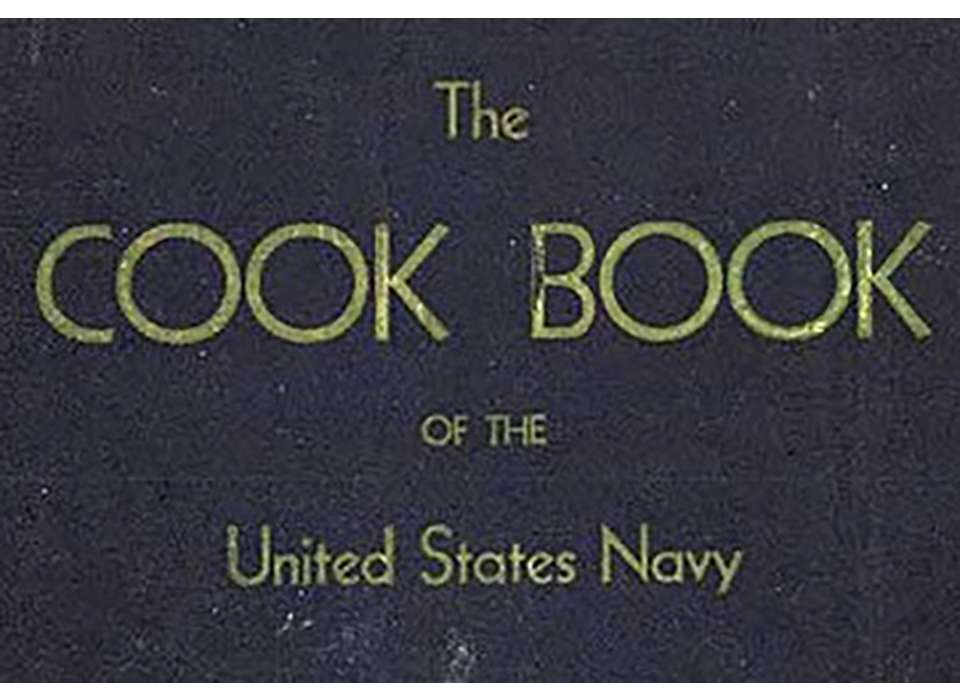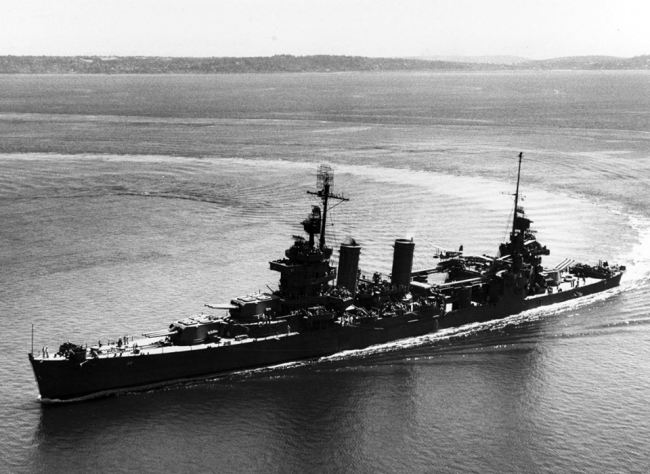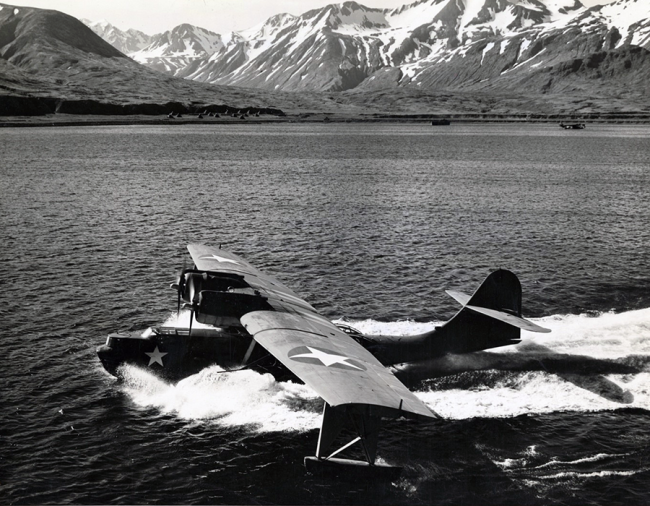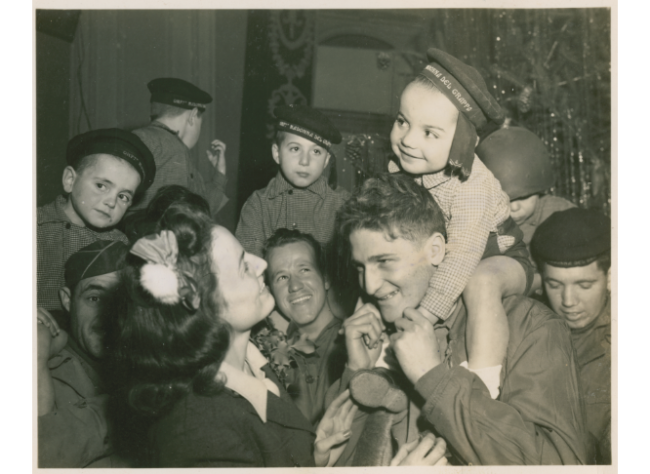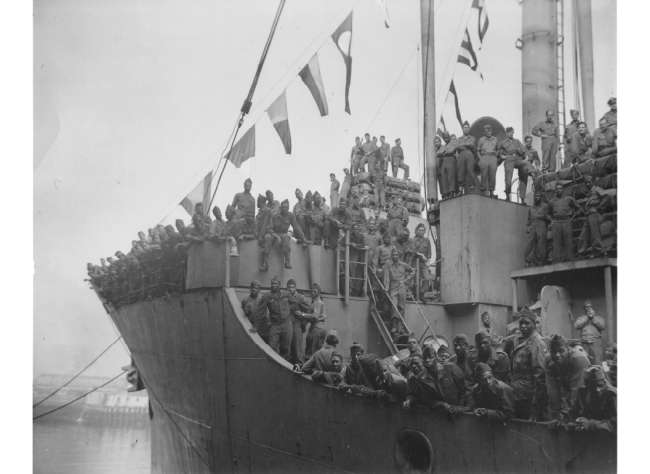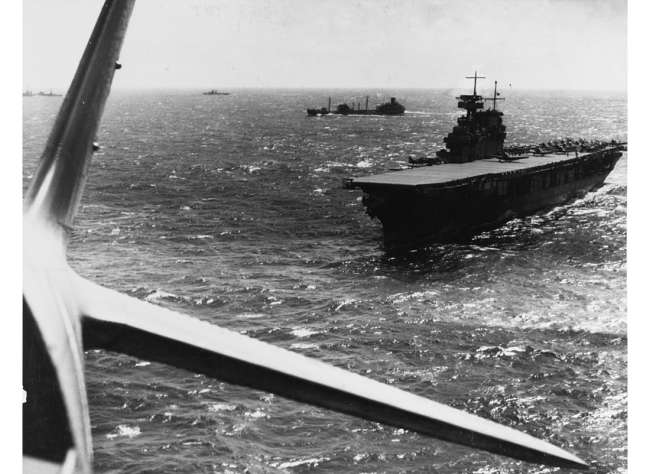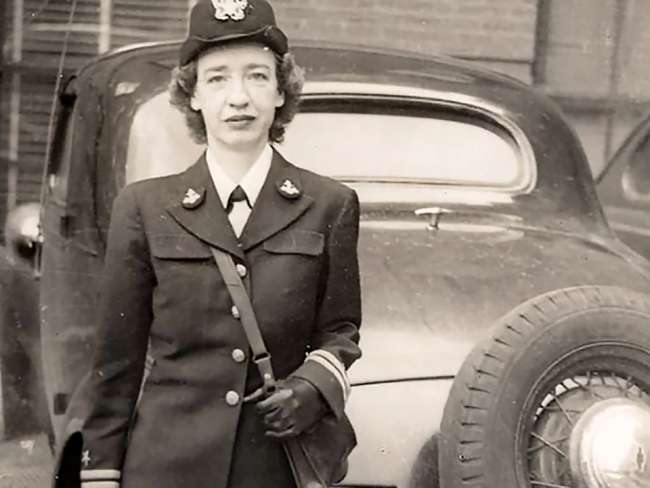Looking for a way to cook the hordes of food you have stockpiled? You need to look no further than the 1945 edition of The Cook Book of The United States Navy. Like many people today, US Navy ships were packed with enough food and toilet paper to survive many weeks of isolation. The difference was the entire crew compliment was together as their ship sailed the world’s oceans. So, ship aside, if you need to cook some of the eggs you have, try the scrambled eggs recipe on page 78. You only need 150 eggs (approximately two gallons) 6 tablespoons of salt, ¾ tablespoon of pepper, ¾ gallon of whole milk, and 1 ¼ quarts of butter or other fat—easy enough. Other than helping push through bulk amounts of food products, the cookbook shows the heavy importance placed on quality food for sailors and how it was prepared aboard ship.
Food has always been one of the most important elements in the US Navy. Early on, a quality meal was an influential recruiting tool. Sailors wanted to know they would be well fed, which was a major concern in early America where the diet was not nearly as diverse as our modern eating habits. Working on labor intensive sailing ships meant sailors burned more than 4,000 calories a day. Food was also important from a crew health stand point; after all, if a crew is not feeling well, they will be unable to perform their assigned duties. One of the most classic examples of food-caused ailments is scurvy—the scourge of movie pirates, and all real mariners during the age of sail.
For the first few decades in US Navy history, the quality of food was good, but the types and standards of storage did not change much. Many a sailor ate salted meats, breads, oats, citrus (packed with scurvy-preventing Vitamin C), and the famous rum ration, almost all of which was stored in wooden barrels. Fast forward a few decades into the early 1900s, ship board food, organization, and a better understanding of nutrition mixed with tradition to form the ships’ mess hall. From its beginnings, crews aboard US Navy ships were divided into messes. These were groups of men that shared the same living space onboard ship and would eat together. Among other reasons, this broke up the number of men the cook had to feed at once, allowing food to be “freshly” prepared for each mess. As ships became more technologically advanced, so did the system and reasoning behind feeding the crew.
Messes were maintained as the base unit of feeding men in groups, but they grew with the size and complexity of new ships. Modern messes were divided up among the ships departments (Navigation, Gunnery, Engineering, Deck Force, etc.) This new system was supported by new technologies, dry stores, refrigerated compartments, and mechanical potato peelers. By the time the United States entered World War II, most ships used the mess hall system. There were a few holdouts, such as the older USS Texas (BB-35), whose crew still brought their food back to their berthing compartment, but for the most part men lined up for a meal and ate in the mess hall.

One of the oldest ships in commission during World War II, the USS Texas (BB-35) had a open galley on the main deck and no mess hall. Sailors would approach the windows to receive their food and bring it back to their assigned bunking compartment. Courtesy of Kali Martin.
World War II saw a massive expansion of the numbers of men and ships. This increased the need for food, trained cooks, and a new version of the standard cookbook. The 1945 edition represents the front lines of feeding the crew of a large ship. Ships’ galleys, the compartment where the food was prepared, were operated by the commissary branch. The commissary branch consisted of unrated sailors, Bakers [Bkr], Ships Cooks [SC], Ships Cooks (Butcher) [SCB], and a Chief Commissary Steward [CCS]. The commissary steward kept track of the accounts, issued food to the cooks, and assisted the head cook in planning the meals. The galley on most ships had a kitchen, a butcher’s station, and a bakery. Most of the equipment was massive to accommodate the huge portions required to feed a large crew. The kitchen contained ovens, griddles, and large steam pots called “coppers.” The baker had man- sized stand mixers, and the butcher had band saws capable of cutting up whole sides of beef.

Bakery aboard the USS North Carolina (BB-55). Bread was a staple aboard ships and the bakers were kept busy. Ovens and massive dough mixers (look for the black eagle on the dough mixer) turned out hundreds of loaves a day to feed the large crew. Courtesy of Kali Martin.
The cookbook preached quality food, a balanced diet, and efficiency. It addressed basic types of food, vitamins and their benefit, and spoilage. Each recipe is geared towards 100 servings, giving the meal planners the ability to scale up or down as the numbers for each mess required. There is also an entire chapter on coffee, the lifeblood of ships. Throughout the manual there is an emphasis on serving fresh food, and using spices or different colors of food to break up the monotony of shipboard meals. This manual also had to account for the inconsistencies of supply by providing unique combinations. Take for example page 198, “Vienna Sausage and Sweet Potatoes.” Certainty an odd combination, but it met the nutritional requirements set out by the Department of the Navy.

Potato peeling station aboard the USS North Carolina (BB-55). KP (Kitchen Patrol) duty peeling potatoes is a classic stereotypical punishment. Although there was plenty of potato peeling done by hand in the US Navy, it was a very time consuming practice. Around the turn of the century large ships began to be equipped with mechanical potato peelers (on the left side of this photo). Courtesy of Kali Martin.
When the ship was at general quarters, the galley was closed, but the work did not stop. Sandwiches and coffee were prepared by the men of the commissary branch, if or when they were released from their individual battle stations. The only thing the manual did not prepare cooks for is the traditional slew of food and portion size complaints from servicemen. Sometimes the men on the firing line (serving line) were placed there because they could give insults as good as they took, keeping the food and men moving regardless of the complaints.
When compared to other branches, the food quality and quantity served to US Navy sailors during World War II was some of the best. Much of this quality is reflected in the lessons and recipes provided in the cook book. If you have some time take stock of your pantry and have a look at the 1945 edition of The Cook Book of the United States Navy. See if you have what it takes to feed an entire ship of hungry sailors.
Joshua Schick
Cite this article:
MLA Citation:
APA Citation:
Chicago Style Citation:
